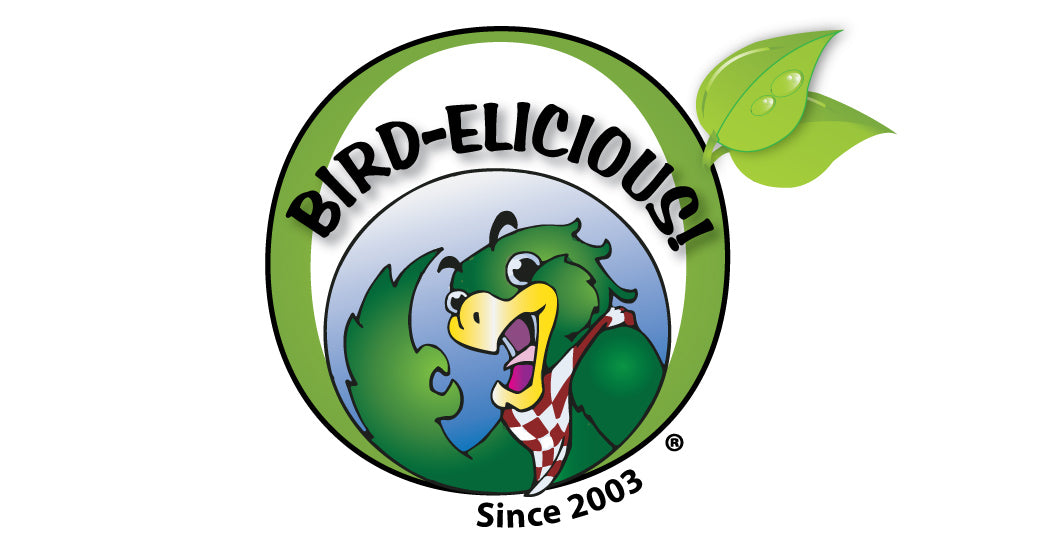Recently a new protective vest for feather destroying birds has arrived on the market. Because I bill myself as a specialist in feather destruction when items like this happen to run across my path I take a good look as to their benefits for our birds or their potential demise.
Many of you know how I feel about cloth protectors; I don’t recommend them for a couple of reasons.
First of all and most important I have experience with cloth protectors that almost landed my Lesser Sulphur Crested Cockatoo in the vet’s office. I realized after her wearing it for a couple of weeks that she was actually ingesting the fabric. This was leading to her digestive tract becoming impacted. It was only after noticing that her appetite had decreased and her droppings were looking “matted” and “stringy” that I realized she was actually eating the fleece collar and not just shredding it allowing the material to fall to the cage bottom. Fortunately I caught this mishap soon enough to remove the protector. My bird was able to eliminate the fleece from her digestive tract and her appetite and elimination returned to normal. Had I not been paying close attention I am convinced she would have become totally impacted and died.
Secondly, cloth protectors holds in body heat. This heats up the internal mast cells. This triggers more and more itching and therefore more picking, plucking and if the bird mutilates, more mutilating.
All of this leads me to the vests made with Kevlar.
Not only are they made with cloth for the bird to chew, but they are made in such a way that they are placed very close to the bird not allowing any air circulation; they really heat up the body.
Now enter in the “non-destructive”, “bullet-proof” material. While this material is fabricated to prevent bullets to penetrate it is not fabricated to prevent beaks from working the fibers and eventually tearing them apart.
Think about this rationally. Kevlar has to be cut somehow; special Kevlar sheers are made in order for this material to be fashioned into the vests and other pieces, such as the protective pieces made for birds. This tells us that it is capable of being cut. If it is capable of being cut, by any kind of machinery or human hands it is entirely capable of being cut by beaks that can apply 375-2000 pounds of pressure per square inch. (Ref: https://dogfacts.wordpress.com/…/national-geographics-dr-b…/ and http://www.beautyofbirds.com/greenwingedmacaws.html ) Add to that mixture the fact that birds “work” their beaks, they gnaw.
Some may think this is not such a big deal if at least this bullet-proof fabric slows a bird down; it’s done a good enough job. I beg to differ, and here’s why. This “fabric” is plastic made of polymers that I would not want any bird to accidentally ingest. (Ref: http://www.explainthatstuff.com/kevlar.html)
Kevlar is a synthetic aromatic polymide polymer. It is a chemical ring of “benzene”. MSDS (manufacture safety data sheets) for benzene states that it is highly poisonous if inhaled or ingested, and carcinogenic: http://www.sciencelab.com/msds.php?msdsId=9927339 and http://www.fresnostate.edu/…/gradu…/documents/msds/b/benzene. While I understand that the bullet-proof fabric is in a solid state, remember birds will be gnawing at the fabric chewing off minute particles and possibly ingesting them. Their digestive acids will then begin to break these plastics down for total and complete absorption into their metabolic system where they will become carcinogenic.
Kevlar is a distant relative of “nylon”. Nylon is yet another synthetic fabric made of plastic polymides, not one but a family of. (Ref: http://www.explainthatstuff.com/nylon.html) Nylons are produced from “amides” which are a known carcinogenic. (Ref: http://www.wisegeek.com/what-is-nylon.htm#didyouknowout)
With this new idea of a protective vest for feather destroying birds we now have three dire concerns in my opinion: 1) The vests are worn so tight to the body they heat up the mast cells triggering itching which leads to more picking, plucking and/or mutilating. 2) The cloth of the vest can be chewed and ingested potentially leading to impaction of the digestive tract. And finally 3) The bullet-proof material was never intended for the purpose of use for feather destructive vests by the company that manufactures it. This material can be gnawed at by a bird’s beak potentially breaking it off into the bird’s mouth. If ingested and swallowed the bullet-proof material can potentially be digested by the strong acids in the digestive tract and may be carcinogenic to the overall system of the bird.
I’m not saying we cannot ever use any protective gear at all. What I am saying is that we must be very, very careful in what we choose to use for our curious and crafty birds. Expert Engineers have designed collars with the habits and dexterity of these magnificently brilliant birds in mind. The disc collars and acrylic neck braces are what I have found to be the safest and most efficient when used in combination. Using these two together seems to prevent even the craftiest bird, like a Cockatoo from getting to just about anywhere on their body. The disc, as long as it is wide enough prevents a bird from reaching over or beyond to its chest, back, legs or wings. The acrylic brace doesn’t allow the bird to stretch over the disc in the first place. And both allow for air circulation. However the bird can still move about freely to climb, eat and drink. Pictured below is what I DO recommend.
Furthermore I only recommend a neck brace and disc for birds that actually mutilate their skin. I believe that birds that pick and pluck their feathers can be rehabbed from doing so on the right dietary program and actually need to relearn how to preen properly.
©6.19.15 Passion Tree House LLC – All Rights Reserved




Leave a comment (all fields required)